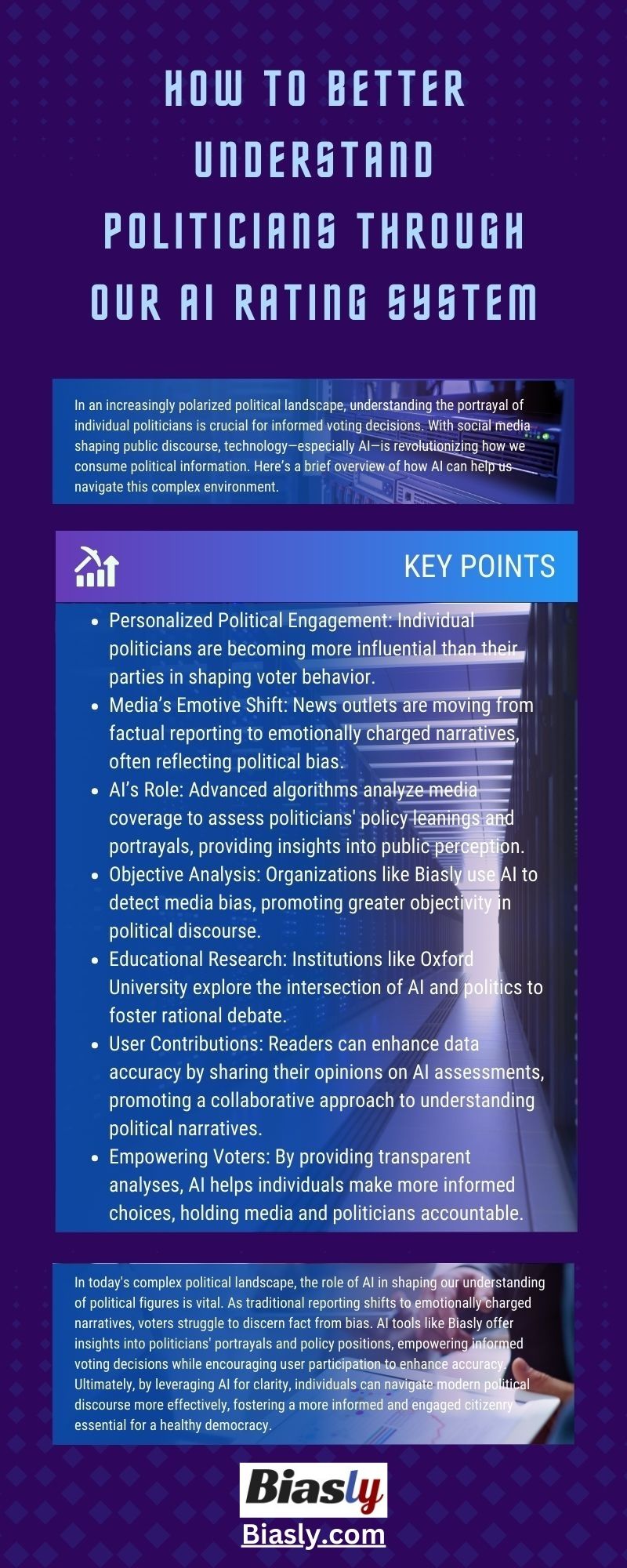
In today’s hyper-emotive world where social-media-driven engagement is resulting in a more polarized political sphere, the role played by individual politicians in deciding how voters cast their ballots is increasingly more important than the parties they represent.
Never has it been more timely than to have an accessible and reliable view of our political leaders and their portrayal in the media so that readers can make informed and enlightened decisions.
AI and Politics
We cannot escape the fact that technology generally – and AI specifically – is having a significant impact on every aspect of our lives. Politics is no different. Every day, through our use of social media platforms and online news and information outlets, we are engaging with technology as the intermediary between us and everyone else in the world. Algorithms and other forms of AI are already dictating a large proportion of what is suggested, pitched, and presented to us online.
Increased online engagement is making people more socially and politically vocal at the individual level – and this online discourse is heavily influencing social change and fuelling political change. The mainstream media has adapted to these changes in interaction with their consumers, by describing events in a less reportage manner. In essence, wanting to appeal more viscerally to the emotions of the reader, and as a result, they are more subject to political bias.
Many educational institutions, such as Oxford University, are already deeply involved in exploring the link between AI and Politicians. As part of the Oxford studies, Research fellow Abhishek Dasgupta refers to the importance of ‘free speech…’ and the ability to ‘achieve objectivity and rational debate…’ during these times.
The work of Biasly, therefore, in detecting media bias through the use of AI and other technologies, has never been more relevant in this quest for media objectivity and social stability.
Politicians and How We Measure Them
As well as this move away from events-based reporting to a more emotive stance, there has also been a parallel shift in focus to the importance of individual political leaders as opposed to their parties. Put simply, individuals relate to other individuals, and the political leaders in our societies influence how voters cast their ballot.
Given that most of us will never meet them in real life, the portrayal of our political leaders in the media really does matter. It dictates how we form our opinions of them and ultimately how we make our voting choices.
Our AI system uses advanced algorithms and recognition technology to scan hundreds of different articles every day, to determine a politician’s leaning on certain policy issues, as well as establishing whether they have a negative or positive portrayal in the article.
Navigating our Politician Portrayals is clear and easy.
Here is a sample of our portrayal ratings and policy leanings for some political leaders on both sides of the aisle.
Republican
- Kelly Loeffler
Policy Leaning: 94% conservative
Portrayal Rating: 75% negative - Christopher Wray
Policy Leaning: 92% conservative
Portrayal Rating: 58% negative - Fred Keller
Policy Leaning: 62% conservative
Portrayal Rating: 68% positive - Carlos Gimenez
Policy Leaning: 70% conservative
Portrayal Rating: 81% positive
Democrat
- Bill Di Blasio
Policy Leaning: -42% liberal
Portrayal Rating: 56% negative - Peter Buttigieg
Policy Leaning: -54% liberal
Portrayal Rating: 92% negative - Kamala Harris
Policy Leaning: -72% liberal
Portrayal Rating: 70% positive - Maria Cantwell
Policy Leaning: -22% liberal
Portrayal Rating: 94% positive
Clicking into the politician’s leaning or portrayal will give you detailed information on the articles associated with that leaning and the specific words/phrases which were identified as giving them a positive, negative or neutral rating. The articles are also broken down by news sources. You can see clearly where your chosen politician stands in relation to specific issues that mean the most to voters such as socialized healthcare, taxes, and welfare.
You can contribute to the data and help to improve our algorithms by adding your own opinion on whether you agree or disagree with a particular assessment. This gives us further information to enhance our AI accuracy and reliability.
Having an AI system that can learn independently, free from the influence of political bias which can sometimes naturally come from the judgment of human beings, has never been more pertinent.
Biasly helps people make better judgments in relation to the media they are consuming and in the politicians they are endorsing. Individuals feel a sense of control and personal input regarding critical social and political questions.
The responsibility of balance and fairness in output is then transferred back to the media outlets and political leadership – completing the ‘trust’ circle of a more informed and balanced reader and voter.























